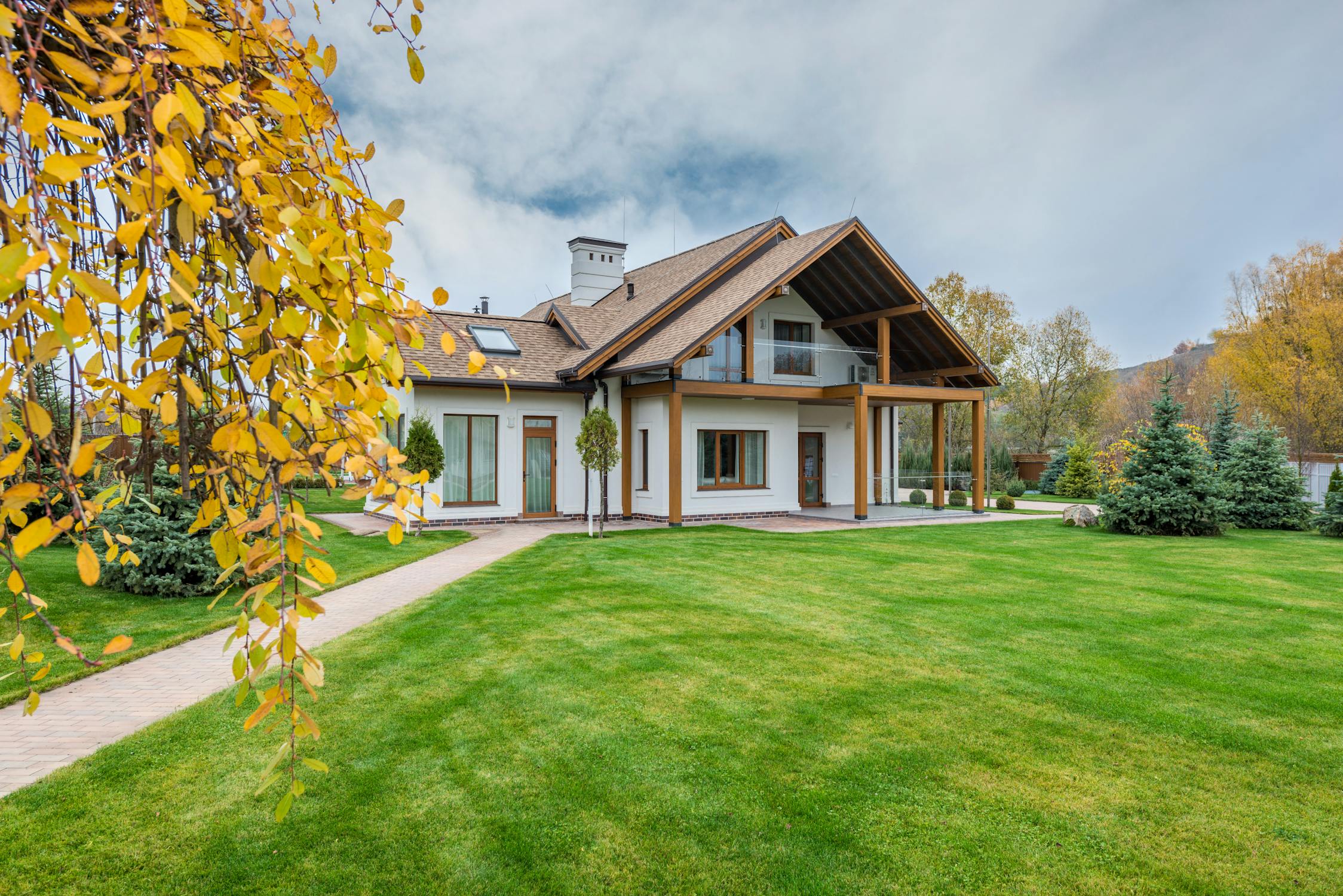
When your lawn doesn’t look its best, it’s frustrating. You can look the other way and ignore the problem, but that’s only a (very) short term solution! Maybe the grass is starting to yellow, or there’s a weed that just won’t quit no matter how many times you pull it. The first step to fixing your lawn woes is identifying the problem.
Lawn issues stem from a variety of factors — poor soil, improper watering, pests, or even the wrong type of grass for your climate. But no lawn is a totally lost cause, you can restore it to its former glory.
Here are the top five culprits behind an unhealthy lawn and exactly how to deal with them.
1. Crabgrass
Crabgrass is the ultimate lawn bully. It’s a fast-growing weed that thrives in warm weather and bare spots on your lawn. Its broad leaves and sprawling nature outcompete grassroots for sunlight, water, and nutrients. Before long, it takes over your once-beautiful yard.
How it Happens: Crabgrass loves disturbed soil. Mowing your grass too short, inconsistent watering, and thin, weak grass create perfect conditions for crabgrass to invade.
The Consequences: Once crabgrass takes root, it spreads aggressively, crowding out your healthy lawn and creating an uneven, patchy look.
The Solution: The best way to combat crabgrass is to stop it before it starts. Apply a pre-emergent herbicide in early spring to prevent seeds from germinating. If crabgrass has already sprouted, hand-pull it or source the best crabgrass weed killer designed specifically for this pesky weed. Lastly, keep your lawn thick and healthy to deny crabgrass room to spread — mow at the right height, water deeply, and fertilize regularly.
2. Brown Patches
Few things are more disheartening than seeing ugly brown patches creeping across your lawn. But what exactly are they? Brown patches could result from fungal diseases, drought stress, or even pet urine.
How it Happens: Poor grass health combined with high heat, excess moisture, or compacted soil creates the perfect breeding ground for fungus. Overfertilizing can also cause nitrogen burns, leading to discoloration.
The Consequences: Brown patches ruin your lawn’s uniform appearance and can spread quickly if left untreated.
The Solution: Start by determining the cause. For fungal problems, apply a fungicide. If your soil is compacted, aerate the lawn to improve airflow and drainage. And remember to water deeply but less frequently — it’s better for grass roots. If pet urine is the culprit, rinse affected spots with water immediately after your dog does their business, and train them to go in one area.
3. Thinning Grass
Does your lawn look more like a bad haircut than a lush masterpiece? Thinning grass happens when your lawn isn’t growing as robustly as it should.
How it Happens: This issue arises from several factors, including over-mowing, nutrient-poor soil, extreme temperatures, and improper watering. It can also indicate grubs or other pests damaging grassroots.
The Consequences: Thin grass looks unsightly, but it’s also an open invitation for weeds like crabgrass to take over.
The Solution: If pests are present, use an appropriate insecticide to handle them. To encourage healthy growth, apply a slow-release fertilizer to reintroduce essential nutrients. Overseeding thin areas with a compatible grass type can also fill out your lawn. Finally, mow less aggressively (about one-third of grass height at a time), and avoid watering too often — aim for longer, deeper watering sessions instead.
4. Overwatering
If you think your lawn will love extra water, think again. Overwatering is one of the most common mistakes homeowners make, and it can turn a vibrant lawn into a soggy, struggling mess.
How it Happens: Many homeowners water their lawns daily, but this encourages shallow root systems and leaves your grass susceptible to disease.
The Consequences: Overwatering can lead to waterlogged soil, fungal growth, and weak roots, which in turn create yellow or dying grass.
The Solution: Water less frequently, but for longer durations. Your lawn needs about 1 to 1.5 inches of water per week, including rainfall. Water early in the morning to reduce evaporation and give your grass time to dry before nightfall. If it rains consistently in your area, consider cutting back on sprinklers altogether.
5. Compacted Soil
Compacted soil might not sound like much of a threat, but it can wreak havoc on your lawn’s health. When soil becomes dense and compressed, grassroots struggle to grow and absorb the nutrients they need.
How it Happens: Heavy foot traffic, machinery, and lack of aeration are the usual culprits behind compacted soil.
The Consequences: Your grass struggles to thrive, leading to weak, patchy growth and greater vulnerability to weeds and disease.
The Solution: Aerate your lawn once a year to loosen soil and promote healthy air, water, and nutrient flow. If your lawn sees a lot of activity, consider placing stepping stones or creating pathways to redirect foot traffic. Lastly, topdress your soil with organic material like compost to improve its structure.
Your lawn doesn’t have to stay stuck in a cycle of weeds, brown spots, or thinning grass. Each problem has a solution — you just need to do a little sleuthing to figure it out, and then give your yard a little bespoke attention. So take a moment to assess what’s going on in your lawn, implement the right fix, and watch as it becomes a green paradise again — or even for the first time ever. Say goodbye to crabgrass and brown patches, and say hello to the lawn you’ve always wanted.